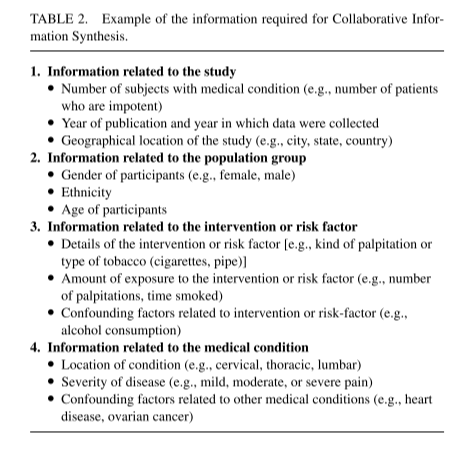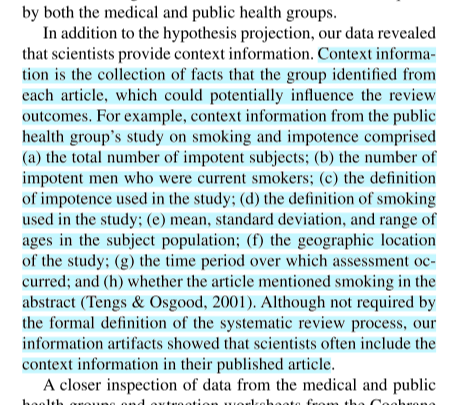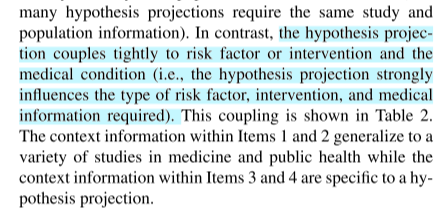Collaborative information synthesis
Authored By:: Joel Chan
- #[References]
- Title: Collaborative information synthesis I: A model of information behaviors of scientists in medicine and public health
- Meta:
- Authored by:: [Catherine Blake] [Wanda Pratt]
- Year: [2006]
- Publication: Journal of the American Society for Information Science and Technology [JASIST]
- URL: Blake & Pratt (2006). Collaborative information synthesis I: A model of information behaviors of scientists in medicine and public health. Journal of the American Society for Information Science and Technology
- Citekey: blakeCollaborativeInformationSynthesis2006
- Content
- Placeholder
- Abstract
- Scientists engage in the discovery process more than any other user population, yet their day-to-day activities are often elusive. One activity that consumes much of a scientist’s time is developing models that balance contradictory and redundant evidence. Driven by our desire to understand the information behaviors of this important user group, and the behaviors of scientific discovery in general, we conducted an observational study of academic research scientists as they resolved different experimental results reported in the biomedical literature. This article is the first of two that reports our findings. In this article, we introduce the Collaborative Information Synthesis (CIS) model that reflects the salient information behaviors that we observed. The CIS model emerges from a rich collection of qualitative data including interviews, electronic recordings of meetings, meeting minutes, e-mail communications, and extraction worksheets. Our findings suggest that scientists provide two information constructs: a hypothesis projection and context information. They also engage in four critical tasks: retrieval, extraction, verification, and analysis. The findings also suggest that science is not an individual but rather a collaborative activity and that scientists use the results of one analysis to inform new analyses. In Part 2, we compare and contrast existing information and cognitive models that have inadvertently reported synthesis, and then provide five recommendations that will enable designers to build information systems that support the important synthesis activity.
- lit-context
- won #BestPaper at [JASIST]
- followed up by Collaborative information synthesis II
- lit-notes
- two main information artifact types: 1) hypothesis projection, and 2) context information
- is an #example-of how [context] is critical for synthesis (in this case, showing the kinds of [context queries] scientists look for to try to do [synthesis] over contradictory findings in a [systematic review]
 (p. 1744)
(p. 1744) (p. 1744)
(p. 1744)
- some types of [context] information were more contextual, depending on the particular “hypothesis projection” of the review, which varied across the lifecycle of the project studied (e.g., location of medical condition, amount of exposure, confounding risk factors), while others were more constant regardless of hypothesis (e.g., study- and population-context information)
 (p., 1744)
(p., 1744) (p. 1744)
(p. 1744)
- authors think that there is enough regularity in the types and locations of [context] information that we could build an automated system to extract htese bits of information, which would in turn enable exploration of a variety of hypothesis projections
- in other words: Z: Contextualizability is necessary for synthesis :)
 (p. 1744)
(p. 1744)
- director of the public health group estimated that she spent ~3 hrs per article to extract [context] information required for a particular [systematic review]
 (p. 1746)
(p. 1746)- this is self-reported estimate: based on work on knowledge work estimation (cc. also The Cost Structure of Sensemaking), could well be an underestimate, though unclear by how much